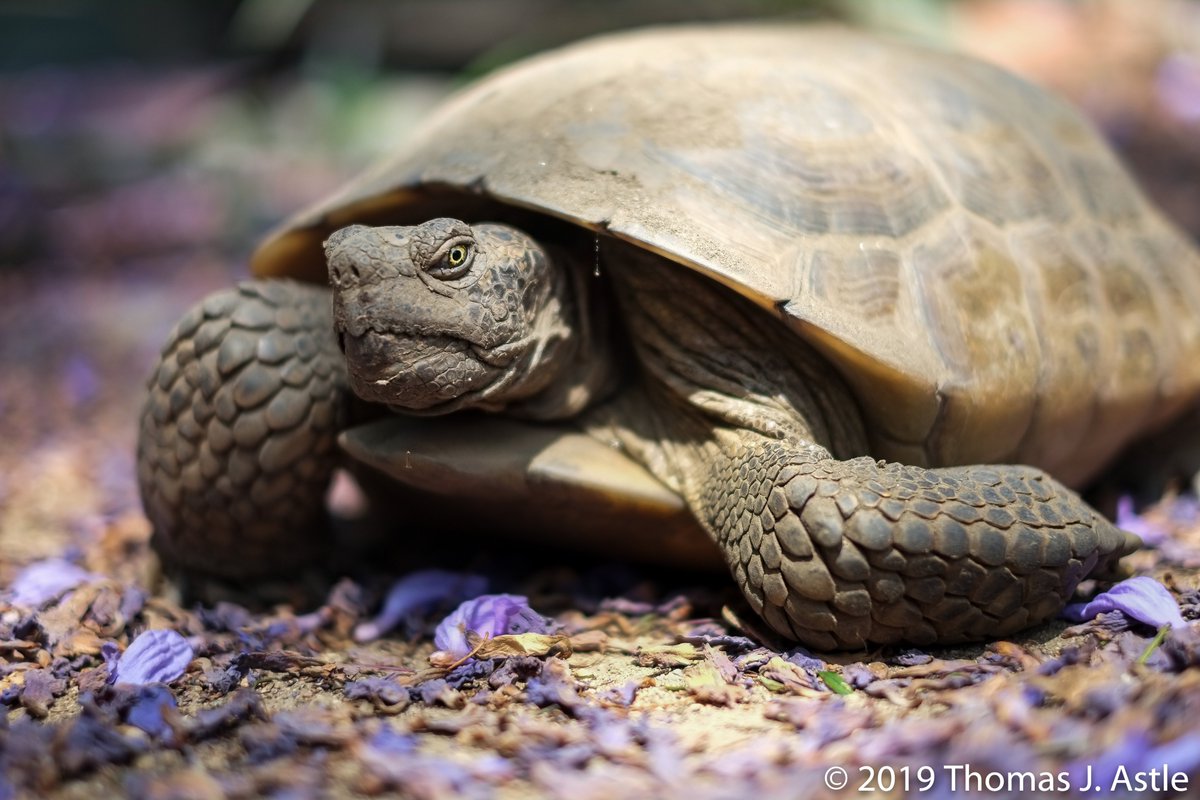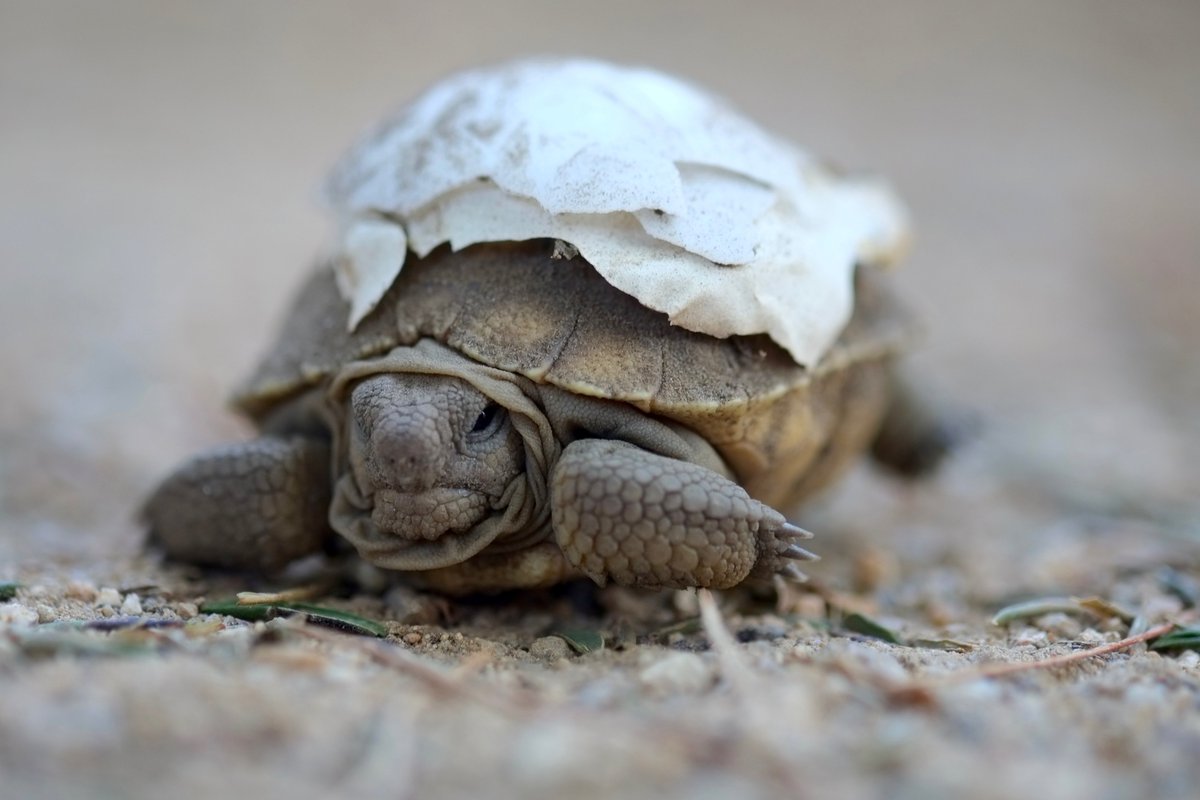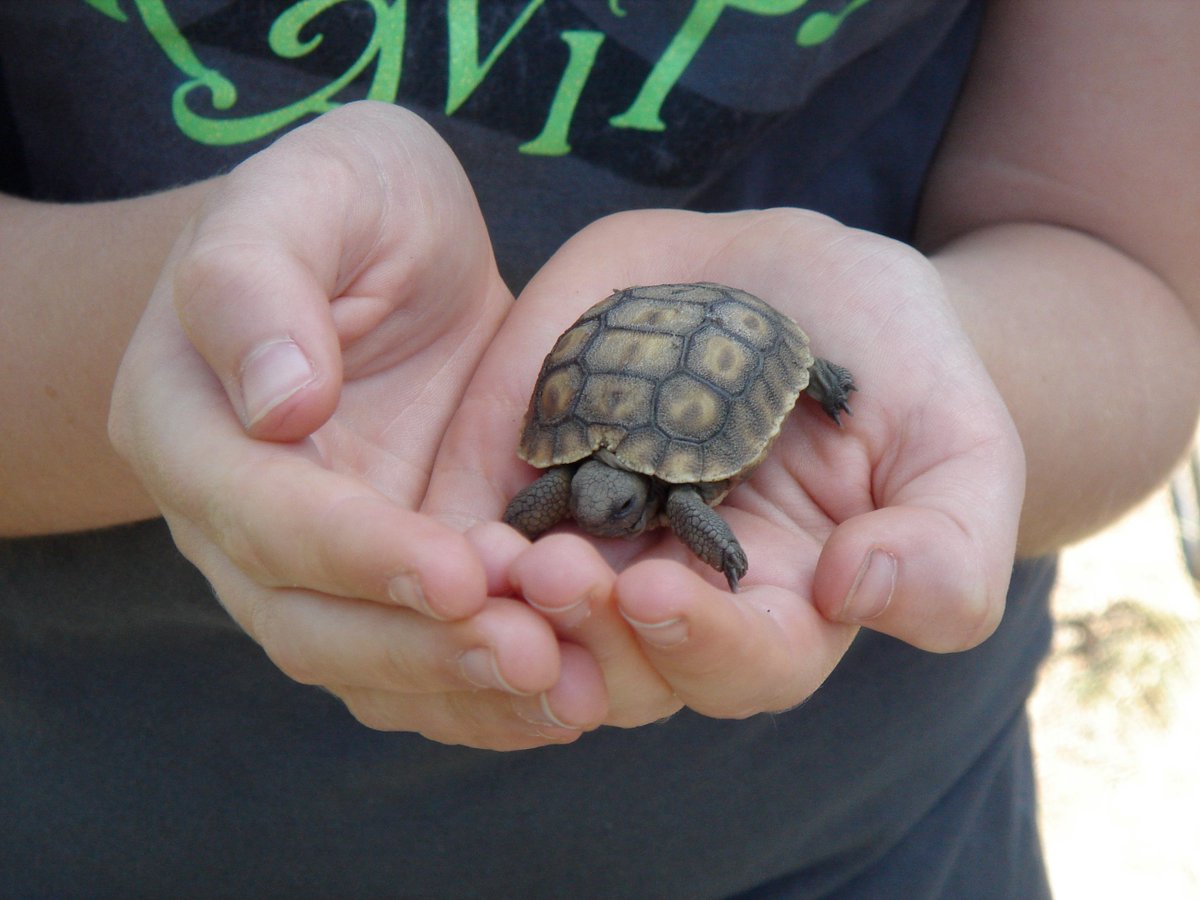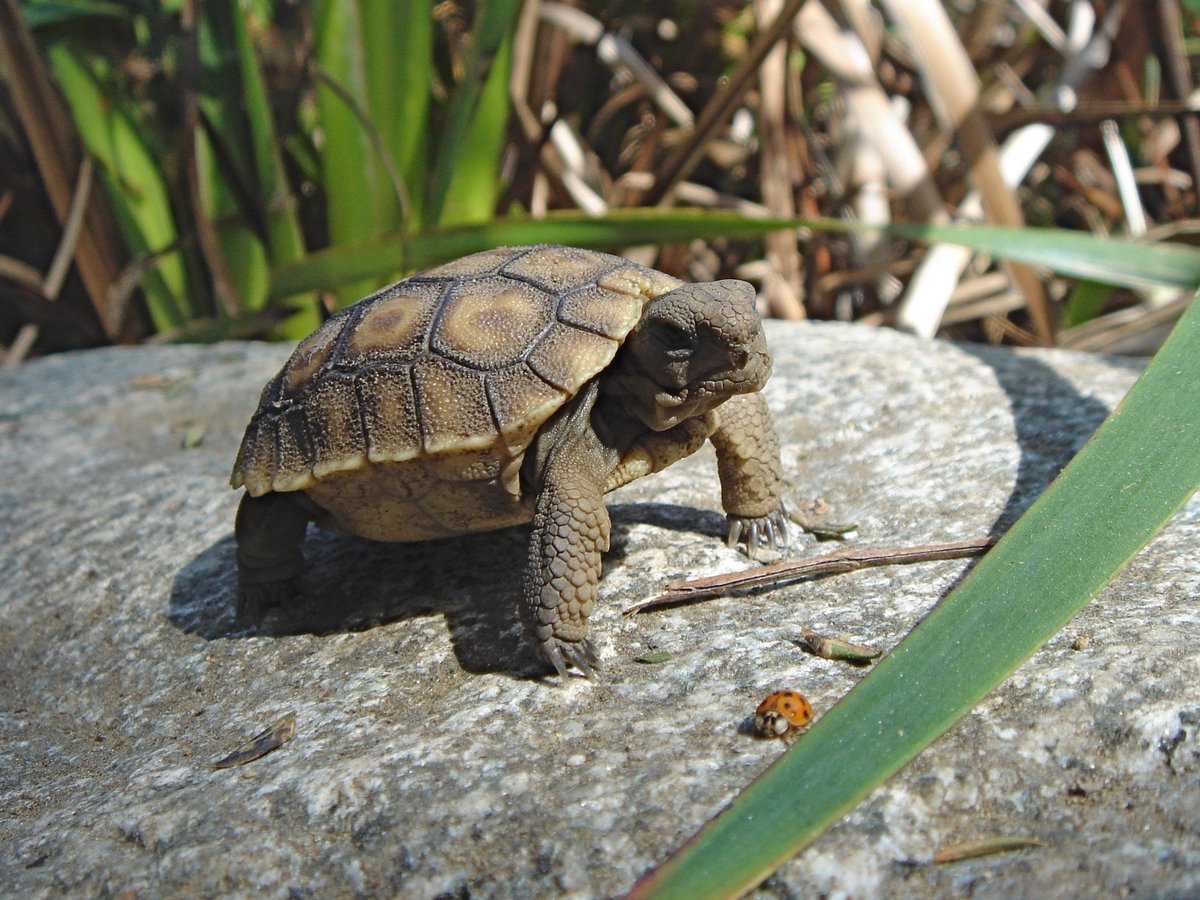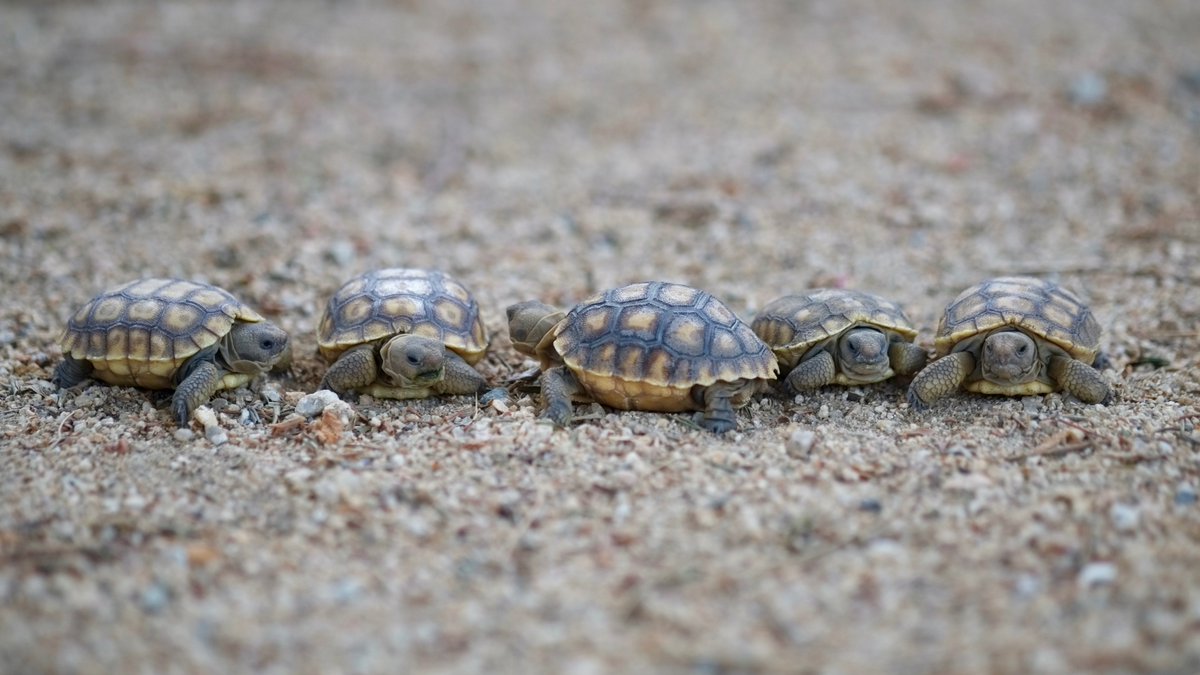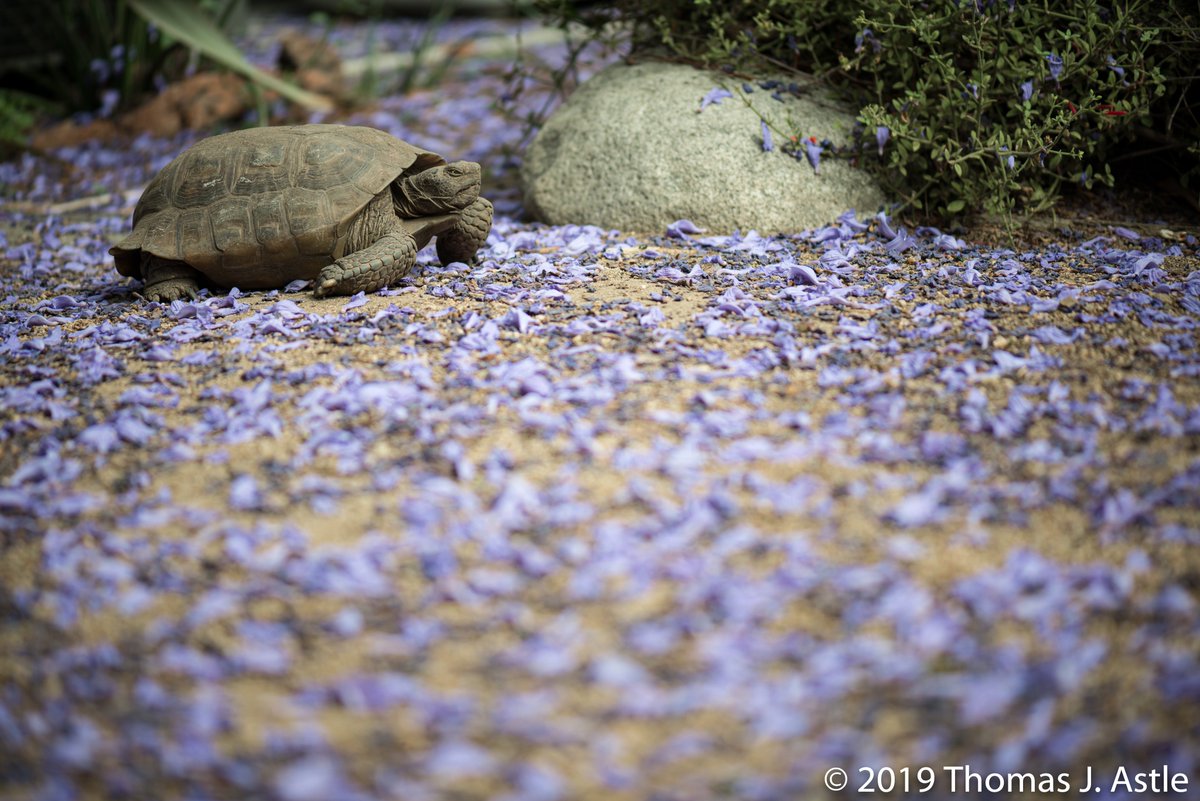Thread: Several people have asked about captive-bred desert tortoises, and years ago, before we were told that captive breeding is now discouraged, #Eddiethetortoise did have a lady friend, Mo. Mo was legally adopted through the Cal. Turtle and Tortoise Club. Here she is:
We were told that Mo had been taken from the desert in the early 70s and that she was probably about Eddie& #39;s age, 50-60. Eddie really liked Mo. Mo... was kinda indifferent to Eddie. She did end up laying eggs three different years, although I never saw her laying them.
The eggs always hatched in October, around the time adults go underground for the winter. We& #39;d be out in the yard and suddenly spot these adorable ping-pong balls walking around. Baby torts are SUPER cute. Here& #39;s one not all the way out of its egg yet:
But here& #39;s the thing: Yes, they& #39;re mega-adorable, but once we learned that breeding this species in captivity was discouraged, and why, we adopted Mo back out to another home (again legally via the CTTC). There are several reasons for this:
First, there are too many desert torts in captivity already, and too few qualified homes for them. Second -- this is key -- captive breeding does NOT help save the species. It can and has with some animals -- California Condors, for instance -- but not desert torts. Here& #39;s why:
Captive desert torts cannot be released back into the wild, by law. Whether once wild, or born in captivity, they could spread disease to wild torts. See, a well-fed captive tort might have a disease, but show few symptoms because of its low-stress, well-fed, cushy lifestyle...
...but a wild tort living on the edge in a tough desert environment might not be able to fight off the same infection that a captive tort tolerates just fine.
And: genetics tell us there are more species of desert torts than most people realize. So captive-bred babies may actually be hybrids, and if those mix with wild populations, they may pollute the purity of a local gene pool. And we all know, it& #39;s not cool to pee in the pool.
And and: captives may not survive being suddenly returned to the wild life. Even if they do, they could out-compete the wild torts already there, stressing the local population further. Again, not cool.
Speaking of not cool, many folks assume desert torts love heat. That& #39;s true to a point, but when it& #39;s really hot, they actually go underground into their cool, humid burrows, slowing their metabolism in a process called estivation (sort of a summer version of brumation).
So, if a formerly captive tort is dropped out into the wild in summer with no burrow to hide in, it may well die from heat and/or dehydration.

 Read on Twitter
Read on Twitter